The Simmental cattle are a very old breed of cattle, and their history dates back to the Middle ages. They are a versatile breed of cattle originating in the valley of the Simme River, in the Bernese Oberland of western Switzerland.
They are actually among the oldest breeds of cattle and widely distributed throughout the world. Along with being an older breed, the Simmental cattle are also very important for being contributor to the creation of many other famous European cattle breeds.
Notable breeds which have been developed from the Simmental cattle are the Montbeliarde (France), the Fleckvieh (Germany) and the Razzeta d’Oropa (Italy).
The breed is currently known by different names in the different parts of the world. For example in Argentina it is known as Fleckvieh Simmental, Simmentaler in South Africa and Namibia.
It is known as Simmental in Zimbabwe, Zambia, United States, United Kingdom, Switzerland (SI-division), Sweden, Poland, New Zealand, Mexico, Ireland, France (early 1990s name change from Pie Rouge), Denmark, Australia, Canada, Brazil, Colombia and Bulgaria. In Uruguay, Switzerland (SF-division), Netherlands, Austria, Germany and Spain the breed is known as Fleckvieh.
The Simmental cattle are also called by some other local names depending on the area they are being raised.
The name of the breed “Simmental” derived from the name of the area where they were first bred, the Simme Valley which is situated in the Berner Oberland in Switzerland.
Early records indicate that, the Simmental cattle were actually the result of a cross between large cattle from Germany and a smaller breed indigenous to Switzerland.
Although it is an old breed, but the first herd book was established in the Swiss Canton of Berne in 1806. And in the year of 1890, The Swiss Red and White Spotted Simmental Cattle Association was formed.
Today the breed is available throughout the world, but most of them are available in Europe. Read more information about this cattle breed below.
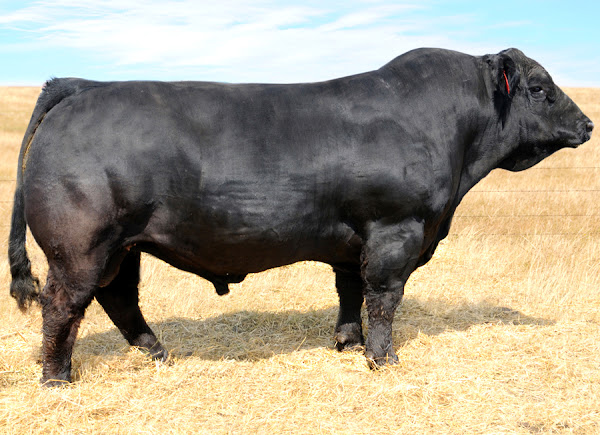
Characteristics
The Simmental cattle are large animals with a wide variations in coat color. Their coat color varies from gold to red with white, and may be evenly distributed or clearly defined in patches on a white background.
They also can be of any single color depending on the type. Actually their color can vary depending on country and type. Head of some animals are white and usually a white band appears over the shoulders.
Most of the Simmental cattle have pigmentation around the eyes, which help to reduce eye problems. They can be either horned or polled, and the horns are up turned in the horned variety. They have good muscling, their frame is large and they have a heavy dewlap.
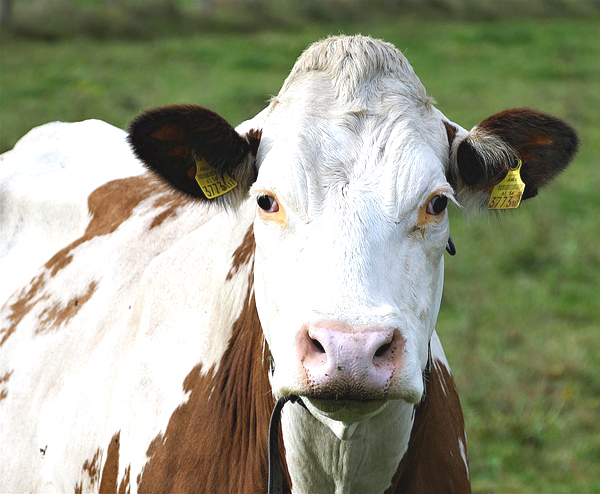
Average height of the bulls is about 150-160 cm, and 135-150 cm for the cows. The bulls on average weight around 1300 kg, and average body weight of the cows is around 700-900 kg. [1]
Uses
The Simmental cattle are versatile animals. There are many breed-type variation and each type is used for specific purpose. But in most cases they are used for both milk and meat production.
Special Notes
Previously, the Simmental cattle breed was used as dairy, beef and draught animals. They are well known throughout the world, especially for the rapid growth rate of the young.
This breed is also noted for providing more combined weaning growth and milk yield than any other breeds. They are usually docile in temperament and the cows have very good mothering traits.
They are very hardy and can adapt themselves easily to the most varied climatic conditions. That’s why today the breed is available throughout the world.
Compared to other similar breeds, the Simmental cattle have excellent grazing abilities and good growth rates. They are very easy to handle and have a very good feed conversion and efficiency.
Some type of the breed is good for meat production, some are good for milk, and some are very good for both milk and meat production.

They were previously used as draught animals, but now are mainly being raised for milk and meat production. However, review full breed profile of the Simmental cattle in the following table.
| Breed Name | Simmental |
| Other Name | Fleckvieh Simmental, Fleckvieh, Simmental, Simmentaler and many other local names |
| Breed Purpose | Milk, Meat, Draught |
| Special Notes | Hardy, strong, fast growers, well adapted to a wide variety of climatic conditions, excellent grazing abilities, excellent mothering abilities, very easy to handle |
| Breed Size | Heavy |
| Bulls | Around 1300 kg |
| Cows | Around 700-900 kg |
| Climate Tolerance | All Climates |
| Coat Color | Many |
| Horned | Yes/polled |
| Milk Yield | Good |
| Rarity | Common |
| Country/Place of Origin | Switzerland |

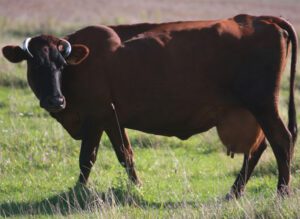
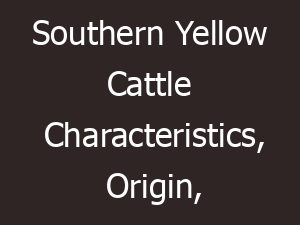

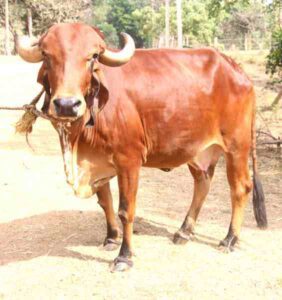
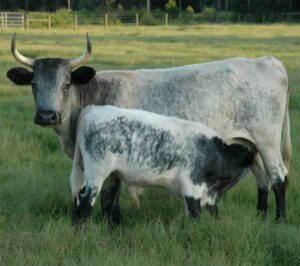
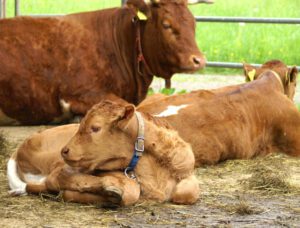
I like their colours and interesting breed